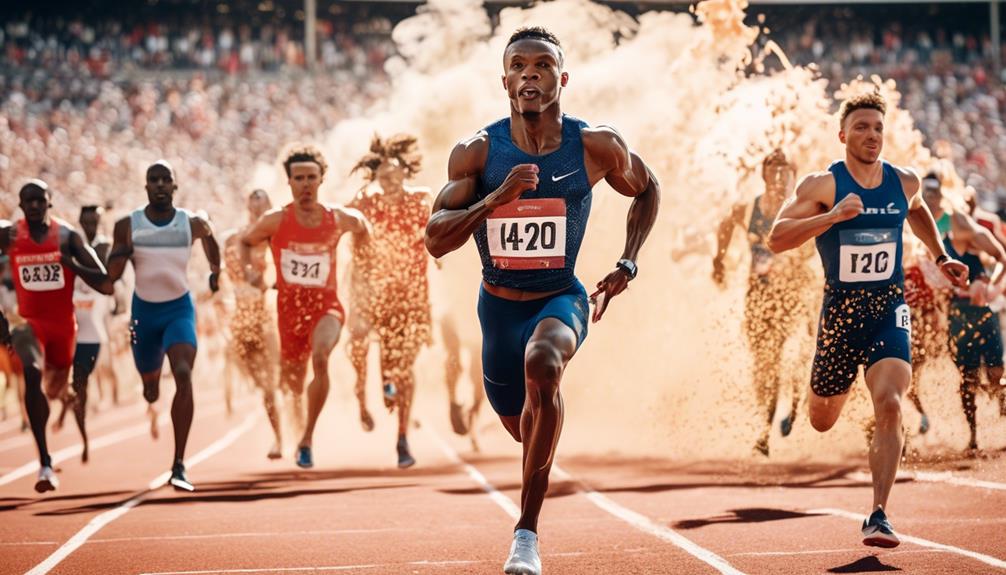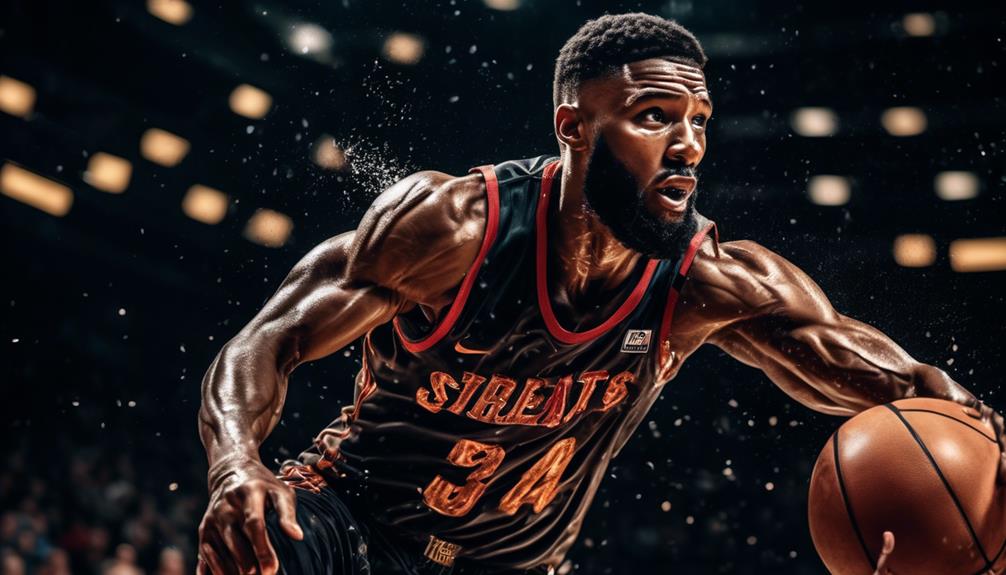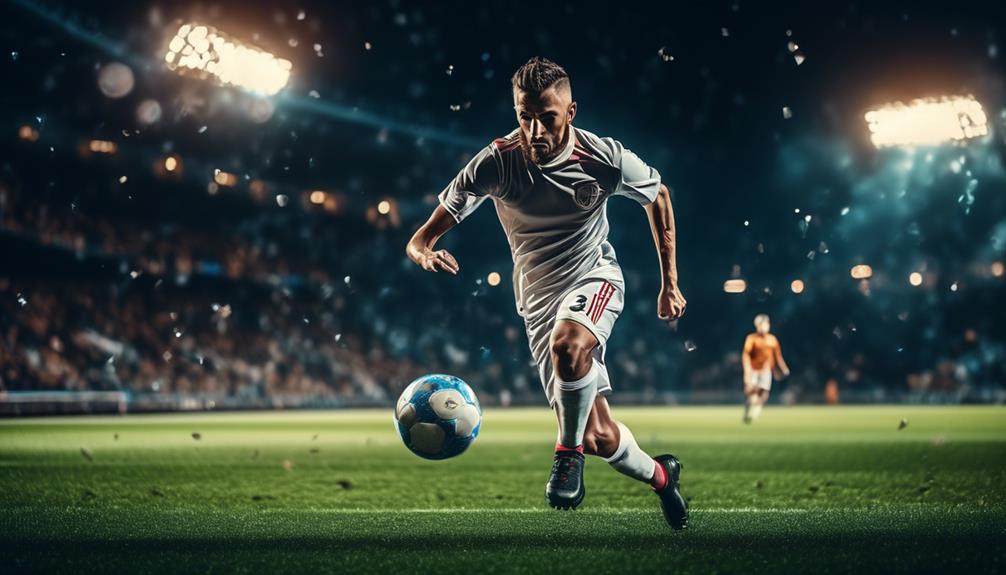Please note this post may contain affiliate links picked by me (Jay) that I have deemed may be of interest or relevant to you the reader of this.
These links do not affect the cost of the thing if you decide to purchase but i may get a little money if you choose to purchase.
For more information on my affiliate link policy click here.
As I stood on the sidelines, camera in hand, I couldn't help but marvel at the sheer power and grace displayed on the field. The athletes moved with such agility and determination, their every action a testament to the relentless pursuit of victory.
It was in that moment, amidst the roar of the crowd and the palpable energy in the air, that I realized the true essence of sports photography. The challenge of freezing these fleeting moments of athleticism, capturing the essence of a game, and conveying the raw emotions that accompany victory and defeat.
Join me as we embark on a journey to master the art of capturing these exhilarating sports events, where every click of the shutter brings us closer to immortalizing the boundless passion and spirit of the athletes in action.
Key Takeaways
- Set your camera to high shutter speed and use continuous shooting mode to freeze action and capture multiple frames in quick succession.
- Anticipate the moment by studying players' movements and patterns to capture game-changing moments.
- Experiment with different angles and use leading lines to capture unique perspectives and create a sense of movement in your sports photos.
- Understand and adapt to different lighting conditions by utilizing bracketing, histograms, and artificial lighting when necessary. Regularly clean and maintain your photography gear for optimal performance.
Camera Settings for Action Shots
When capturing action shots, it's crucial to optimize your camera settings for the best results. To freeze motion and capture fast-paced action, there are a few key settings you should consider.
First, set your camera to a high shutter speed. This will allow you to capture the split-second moments with clarity and precision. A shutter speed of 1/1000 or higher is ideal for freezing motion.
Additionally, using a continuous shooting mode can help you capture multiple frames in quick succession, ensuring you don't miss any crucial moments.
Another important setting to consider is the autofocus mode. Choose the continuous autofocus mode to track moving subjects and keep them in sharp focus.
Lastly, don't forget to adjust your ISO settings. In well-lit conditions, a low ISO of around 100-400 will produce clean, noise-free images. However, if you're shooting in low light or indoor venues, you may need to increase the ISO to maintain a fast shutter speed.
Choosing the Right Equipment
Now that we understand how to optimize our camera settings for action shots, let's dive into the exciting world of choosing the right equipment. As a passionate sports photographer, I know that having the right gear can make all the difference in capturing those adrenaline-fueled moments with precision and clarity.
Here are some key factors to consider when selecting your equipment:
- Camera Body: Look for a camera with fast autofocus and burst mode capabilities to ensure you never miss a crucial moment.
- Lenses: Invest in a variety of lenses to cover different focal lengths, from wide-angle for capturing the whole field to telephoto for zooming in on the action.
- Tripod or Monopod: These stabilizing tools can help you achieve sharp images, especially when shooting in low light conditions or using long telephoto lenses.
- Memory Cards: Opt for high-speed, high-capacity memory cards to ensure you can capture continuous bursts of action without worrying about running out of storage.
- Equipment Maintenance: Regularly clean your gear, check for any damage, and keep spare batteries and lens cleaning kits handy to avoid any unexpected issues during a shoot.
Mastering the Art of Timing
Timing is the secret ingredient that transforms a good action photograph into an extraordinary one, capturing the essence of the moment with a captivating sense of energy and emotion. As a sports photographer, I understand the importance of perfecting shutter speed and anticipating the moment. The perfect balance of these two elements can result in breathtaking images that freeze action in its most exhilarating form.
To perfect shutter speed, it's crucial to understand the sport you're photographing. Each sport has its own unique rhythm and pace, and adjusting your shutter speed accordingly will allow you to capture the decisive moment with precision. A faster shutter speed freezes fast-paced action, while a slower shutter speed creates a sense of motion and dynamism.
Anticipating the moment is an art in itself. It requires deep knowledge of the sport, the athletes, and the dynamics of the game. By studying the players' movements, their patterns, and their body language, you can predict when the peak action will occur. This gives you a split-second advantage, allowing you to capture that game-changing goal, the winning touchdown, or the triumphant victory celebration.
Innovation in sports photography lies in the ability to capture that split second of brilliance, that moment of pure intensity. By mastering the art of timing, you can capture images that not only showcase the physicality of the sport but also evoke the raw emotions and adrenaline that make sports so captivating.
Capturing Dynamic Sports Poses
To capture the dynamic essence of sports, one must master the art of capturing athletes in their most powerful and awe-inspiring poses. As an action photographer, I've learned that freezing motion and creating a creative composition are key elements in capturing dynamic sports poses.
Here are five techniques that will help you take your sports photography to the next level:
- Freeze the action: Use a fast shutter speed to freeze the motion and capture the athletes in mid-air or in the heat of the action. This will add a sense of power and intensity to your images.
- Capture the emotion: Look for those moments when the athletes show their determination, joy, or frustration. These emotions can bring your images to life and create a connection with the viewer.
- Experiment with angles: Move around and try different angles to capture unique perspectives. Get down low to emphasize the athletes' power or shoot from above to show the full extent of their movements.
- Use leading lines: Incorporate elements in your composition that lead the viewer's eye towards the athletes. This can create a sense of movement and draw attention to the main subject.
- Tell a story: Capture a sequence of shots that tell the story of the game or the athlete's journey. This will create a narrative and engage the viewer.
Tips for Shooting in Different Lighting Conditions
When shooting in different lighting conditions, it's crucial to adapt your techniques and settings to ensure that you capture the action in the most dynamic and visually stunning way possible. Balancing exposure in challenging lighting conditions can be a daunting task, but with the right knowledge and equipment, you can achieve incredible results.
One technique to consider is bracketing, where you take multiple shots at different exposure levels and blend them together in post-processing. This helps to capture details in both the highlights and shadows, resulting in a well-balanced image. Additionally, using the histogram on your camera can guide you in adjusting your exposure settings to avoid overexposed or underexposed photos.
Another challenge in sports photography is shooting indoors, where lighting conditions can be dim and unpredictable. In these situations, utilizing artificial lighting becomes essential. This can include using strobes or speedlights to add additional light to the scene and freeze the action. It's important to position the lights strategically to avoid harsh shadows or reflections.
To summarize, shooting in different lighting conditions requires adaptability and a solid understanding of exposure. By balancing exposure in challenging lighting conditions and utilizing artificial lighting for indoor sports photography, you can capture stunning action shots that truly showcase the intensity of the moment.
Keep experimenting and pushing the boundaries of what's possible with your photography skills.
Frequently Asked Questions
How Do I Deal With Distracting Backgrounds in My Sports Action Shots?
When dealing with distracting backgrounds in my sports action shots, I employ various techniques to ensure the focus remains on the athletes.
By using a wide aperture, I can create a shallow depth of field, effectively blurring out any distractions.
Additionally, I carefully choose my shooting angle and position myself to minimize cluttered backgrounds.
This allows me to capture the energy and intensity of the moment while keeping the viewer's attention where it should be – on the action.
What Are Some Tips for Capturing Emotion and Intensity in Sports Photography?
When it comes to capturing emotion and intensity in sports photography, it's all about capturing those decisive moments and conveying the energy of the action.
It's about freezing that split-second when a player's face shows determination or when the crowd erupts in celebration.
To achieve this, I make sure to stay focused, anticipate the action, and use fast shutter speeds to freeze the motion.
It's an exhilarating experience, and one that constantly pushes me to innovate and capture the essence of sports.
How Can I Effectively Freeze Fast-Moving Subjects in My Action Shots?
To freeze fast-moving subjects in action shots, I rely on a few key techniques.
Firstly, I set my camera to a fast shutter speed to capture the split-second moments with precision.
Secondly, I use continuous autofocus to track the subject and maintain sharpness.
Lastly, I position myself in anticipation of the action to capture the perfect angle.
Are There Any Specific Techniques for Capturing Motion Blur in Sports Photography?
Capturing motion blur in sports photography is an art form that adds a dynamic and exciting element to your images. By using panning techniques, you can create stunning shots that showcase the speed and intensity of the athletes in action.
Additionally, experimenting with long exposure techniques can produce unique and artistic motion blur effects, giving your sports action shots a creative twist. These techniques allow you to push the boundaries of traditional sports photography and deliver innovative and captivating images.
What Are Some Creative Angles and Perspectives to Consider When Shooting Sports Events?
When shooting sports events, it's crucial to explore different angles and perspectives to capture unique and captivating shots. By experimenting with various vantage points, I can add a creative touch to my photographs and make them stand out.
Whether it's shooting from a low angle to emphasize the athlete's power or getting up close to capture the intensity in their eyes, these techniques can elevate my sports photography game.
Additionally, understanding the importance of timing and utilizing different lighting techniques can further enhance the visual impact of my shots.
Conclusion
In conclusion, capturing the thrilling moments of sports events requires not only the right camera settings and equipment but also mastering the art of timing and capturing dynamic poses.
Additionally, adapting to different lighting conditions is crucial for achieving outstanding action photography.
Did you know that photographers take an average of 2,000 shots during a single sports event to ensure they capture the perfect moment? It's a testament to their dedication and passion for capturing the essence of sports in a single frame.


